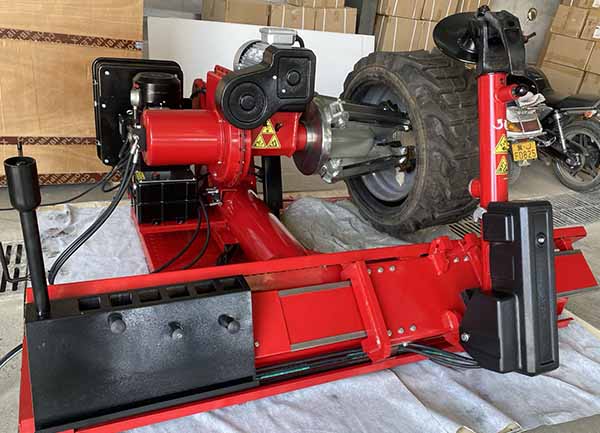Car Tire Changer: A Complete Guide
A tire changer is a machine used to remove and install tires onto rims, essential for tire shops, garages, and even some DIY enthusiasts. Whether manual, semi-automatic, or fully automatic, tire changers make replacing and repairing tires faster and safer.
Types of Tire Changers
1. Manual Tire Changers (Manual Bead Breaker)
-
How it Works: Requires physical effort to break the bead and lever the tire on/off.
-
Best For: Occasional use (home mechanics, off-road enthusiasts).
-
Pros:
-
Cheap (under $200 for basic models).
-
Portable (no power needed).
-
-
Cons:
-
Labor-intensive (risk of damaging wheels if not careful).
-
Slow compared to automated machines.
-
2. Semi-Automatic Tire Changers
-
How it Works: Uses hydraulic/pneumatic power for bead breaking and mounting but requires manual positioning.
-
Best For: Small repair shops, medium-duty use.
-
Pros:
-
Faster than manual changers.
-
More consistent results.
-
-
Cons:
-
Requires air compressor or power source.
-
Still needs some manual effort.
-
3. Fully Automatic Tire Changers
-
How it Works: Computer-controlled arms handle bead breaking, mounting, and demounting.
-
Best For: High-volume tire shops, dealerships.
-
Pros:
-
Fastest & safest option.
-
Minimal risk of wheel damage.
-
-
Cons:
-
Expensive (5,000–20,000+).
-
Requires training to operate.
-
Key Features to Consider
| Feature | Why It Matters |
|---|---|
| Bead Breaker Force | Determines if it can handle stiff truck/SUV tires. |
| Mount/Demount Head | Protects alloy wheels from scratches. |
| Motor Power | Affects speed and ability to handle large tires. |
| Wheel Clamping System | Secures the wheel without damage (important for expensive rims). |
| Portability | For mobile mechanics or home use. |
Best Tire Changers (By Category)
🔧 Best Manual Tire Changer
-
Harbor Freight Tire Changer (~$200)
-
Good for DIYers, includes a bead breaker.
-
⚙ Best Semi-Automatic
-
Ranger R575 (~$2,500)
-
Reliable for small shops, works on most passenger tires.
-
🚀 Best Fully Automatic
-
Hunter TCX75 (~$15,000)
-
Top-tier for commercial use, minimizes wheel damage.
-
How to Use a Tire Changer (Basic Steps)
-
Break the Bead – Separate the tire from the rim.
-
Lubricate the Tire – Use soapy water or tire lube for easier mounting.
-
Position the Wheel – Clamp securely to avoid movement.
-
Mount/Demount – Use the machine’s arm to remove or install the tire.
-
Check for Leaks – Inflate and inspect the bead seal.
⚠ Warning:
-
Always wear safety glasses (tire beads can snap violently).
-
Avoid damaging TPMS (Tire Pressure Monitoring System) sensors.
FAQ: Common Questions
1. Can I change run-flat tires at home?
-
Not recommended—run-flats have stiff sidewalls and require professional machines.
2. Do I need a balancer too?
-
Yes! A tire changer removes/installs tires, but a wheel balancer ensures smooth driving.
3. Can tire changers handle low-profile tires?
-
Only high-end models can do it safely without scratching wheels.
4. How much does a professional tire changer cost?
-
2,000–20,000+ depending on automation level.
Conclusion
-
For DIYers: A manual changer is affordable but labor-intensive.
-
For small shops: A semi-automatic machine is a good balance.
-
For high-volume shops: Invest in a fully automatic changer.
Would you like recommendations for a specific vehicle type (e.g., trucks, luxury cars)?
Next:


 TEL / PHONE
TEL / PHONE
 ADDRESS
ADDRESS
 E-MAIL
E-MAIL

